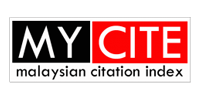Investigation of Inline Curing System Using Halogen Lamp on PET Substrate
DOI:
https://doi.org/10.58915/aset.v3i1.784Keywords:
Inline Curing, Halogen Lamp, Conductive Ink, PET SubstrateAbstract
Halogen lamps have been seen producing faster high temperatures, which potentially reduces the curing time even further, but the current application was performed offline, thus causing the increase in manufacturing time and inaccuracy of the dimension of the ink track printed. Furthermore, the sample may also have been cured by surrounding temperature rather than the selected designated curing process. The inline curing process of conductive ink is required to prevent air cured and simultaneously reduce the manufacturing time. This study aims to evaluate the performance of the inline curing process through a halogen lamp on a PET substrate. The important curing parameters were determined, and the effect on manufacturing time, dispersion rate, and resistance were analyzed. The relationship between the significant parameters, including curing time and temperature, has also been established in which the resistance of the ink track is proportionated to the length of curing time and how high the temperature is applied. The conductive properties were increased when the temperature was elevated, reducing the curing time. However, increasing the time taken to cure the ink caused the substrate to wrap, deform a bit, and slightly damage the sample. It was also observed that the hardness and adhesion level became harder and stronger as the temperature increased. This concludes that the inline curing process using a halogen lamp is feasible on a PET substrate.
References
Saad, A.: Environmental pollution reduction by using VOC-free water-based gravure inks and drying them with a new drying system based on dielectric heating. Dr. Thesis (2007).
Li, W., Sun, Q., Li, L., Jiu, J., Liu, X. Y., Kanehara, M., Minari, T., Suganuma, K. The rise of conductive copper inks: challenges and perspectives. Appl. Mater. Today, 18, (2020) p. 100451
Titkov, A., Bukhanets, O., Gadirov, R., Yukhin, Y., Lyakhov, N. Conductive inks for inkjet printing based on composition of nanoparticles and organic silver salt. Inorg. Mater. Appl. Res., vol 6, issue 4 (2015) pp. 375–381.
Sato, T., Fearon, E., Curran, C., Watkins, K., Dearden, G., Eckford, D. Laser-assisted Direct Write for aerospace applications. Proceeding of the Institution of Mechanical Engineers, Part G: Journal of Aerospace Engineering, vol 224, issue 4 (2010) pp. 519-526.
Roberson, D., Wicker, R., MacDonald, E. Ohmic curing of printed silver conductive traces. J. Electron. Mater., vol 41, issue 9 (2012) pp. 2553–2566.
Eugene, W., Gupta, M. Characteristics of aluminum and magnesium-based nanocomposites processed using hybrid microwave sintering. Journal of Microwave Power and Electromagnetic Energy, vol 44, issue 1 (2010) pp. 14–27.
Khirotdin, R., Ahmad, M., Nizam, M., Hassan, N. Investigation of Reducing Curing time of Silver Conductive ink using Halogen Lamp on Polymer Substrate. Proceeding of International Conference of Mechanical Engineering ICME21, (2021) pp. 5–9.
Mustapha, S., Ye, L. Bonding piezoelectric wafers for application in structural health monitoring-adhesive selection. Research in Nondestructive Evaluation, vol 26, issue 1 (2015) pp. 23–42.
Taghiyari, H., Rangavar, H. Effect of nano-silver on reduction of hot-pressing time and improvement in physical and mechanical properties of particleboard BioResources, vol 6, issue 4 (2007) pp. 4067-4075.
Park, J., Rhee, S. A study of hybrid drying process to improve drying speed and electrical conductivity for roll-to-roll printing. Japanese Journal of Applied Physics, vol 49, issue 5 (PART 2) (2010) p. 05EC10.
Kim, N. W.; Lee, D.-G.; Kim, K.-S.; Hur, S. Effects of Curing Temperature on Bending Durability of Inkjet-Printed Flexible Silver Electrode. Nanomaterials, vol 10, issue 12 (2020) p. 2463
Wang, X. Q., Gan, W. P., Zhou, J., Xiang, F., Long, M., Peng, D. Effect of silver powders on a low curing temperature silver conductive adhesive. Journal of Materials Science: Materials in Electronics, vol 29, issue 21 (2018) pp. 18547–18552.
Khinda, G., Kokash, M., Alhendi, M., Yadav, M., Lombardi, J., Weerawarne, D., Poliks, M., Borgesen, P., Stoffel, N. Effects of oven and laser sintering parameters on the electrical resistance of IJP nano-silver traces on mesoporous PET before and during fatigue cycling. Electronic Components and Technology Conference (2019) pp. 1946-1951.
Gulledge, T. What is integration? Ind. Manag. Data Syst., vol 106, issue 1 (2006.) pp. 5–20.
Chizari, S., Shaw, L. A., Hopkins, J. B. Simultaneous printing and deformation of microsystems: Via two-photon lithography and holographic optical tweezers. Mater. Horizons, vol 6, issue 2 (2019) pp. 350–355,.
Schlatter, S., Grasso, G., Rosset, S., Shea, H. Inkjet Printing of Complex Soft Machines with Densely Integrated Electrostatic Actuators, Adv. Intell. Syst., (2020) pp. 1-14.












